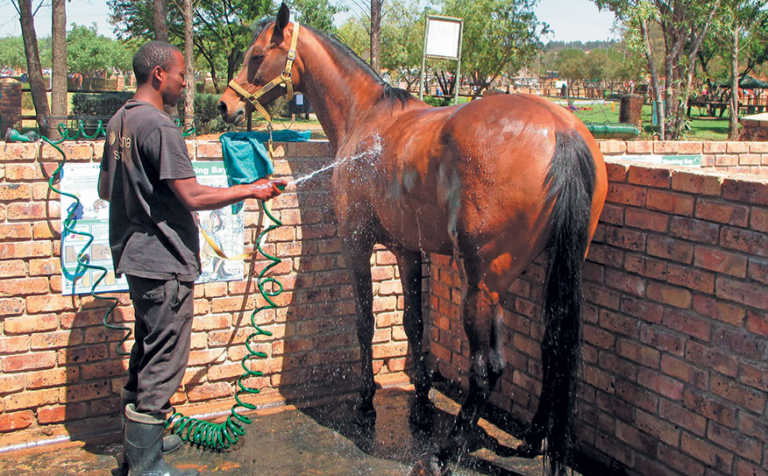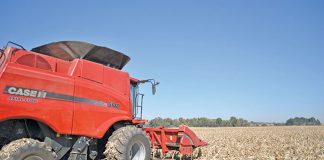
Photo: Dr Mac
Dirty horses are not only unsightly, but can develop saddle sores if not cleaned properly before being ridden.
Although tying a single horse up to a tree and sponging it down with soap and water may be practical, this can result in a muddy bog close to the stables. Therefore, building a proper wash bay might be worth your while.
Building the wash bay
When constructing a wash bay, the following must be considered:
Location
This is the first priority. In some countries, wash bays are built indoors because of icy winters; however, in South Africa’s temperate climate, they can be built outdoors, which is much more affordable. Wash bays must be easily accessible and located fairly close to the stables.
They should also be built on a slight slope so that the water can drain easily. It’s crucial that runoff water does not leak into the stables, or form pools where disease-carrying midges and mosquitoes can breed.
Thus, the simplest solution is to steer the runoff into a French drain, which is a long, downhill ditch filled with stones or building rubble and covered with topsoil, and grass.
Planting a tree at the far end of the ditch will ensure excess water is easily absorbed.
It’s not sensible to steer the runoff water into a sewerage system. However, if there is no alternative, ensure you have a good, slotted drain cover to prevent hair, mud and manure clogging the drainage pipes.
Easy access to water
Fortunately, it’s not difficult to attach a long hosepipe to a tap that can also be used to fill water buckets at the stables. Use brass or metal pipe nozzles as plastic ones are easily destroyed by hooves.
For the same reason, if you decide to pipe water into the wash bay, use heavy, galvanised iron pipes and bury them to prevent horses standing on them.
Where water pressure is low, mechanical pressure hoses, like those used for washing cars, are a great solution. It is rarely required to heat the washing water. If it is cold, simply sponge down the horse using a bucket of warm water.
The floor
The wash bay floor is generally made of a scarred concrete slab about 10cm thick, as smoother concrete could cause the horse to slip.
You can also build a pebbled or brick surface, but with time and the effect of water, the pebbles or bricks tend to become loose.
The size
The wash bay should be about 3m x 3m, which leaves enough room for the horse to move around, and for the groom to work comfortably.
Although the edges can be built of wooden or steel poles, a solid wall about 120cm high is more suitable, as it confines water splashes and makes it easier to manage unruly horses.
Hygiene
Tidiness and hygiene are extremely important. Remove all manure as soon as you have finished washing the horse.
Shampoo and conditioner bottles must also be capped and stored in a plastic carrier, and the water turned off when the task has been completed.
Dr Mac is an academic, a practising equine veterinarian and a stud owner.











